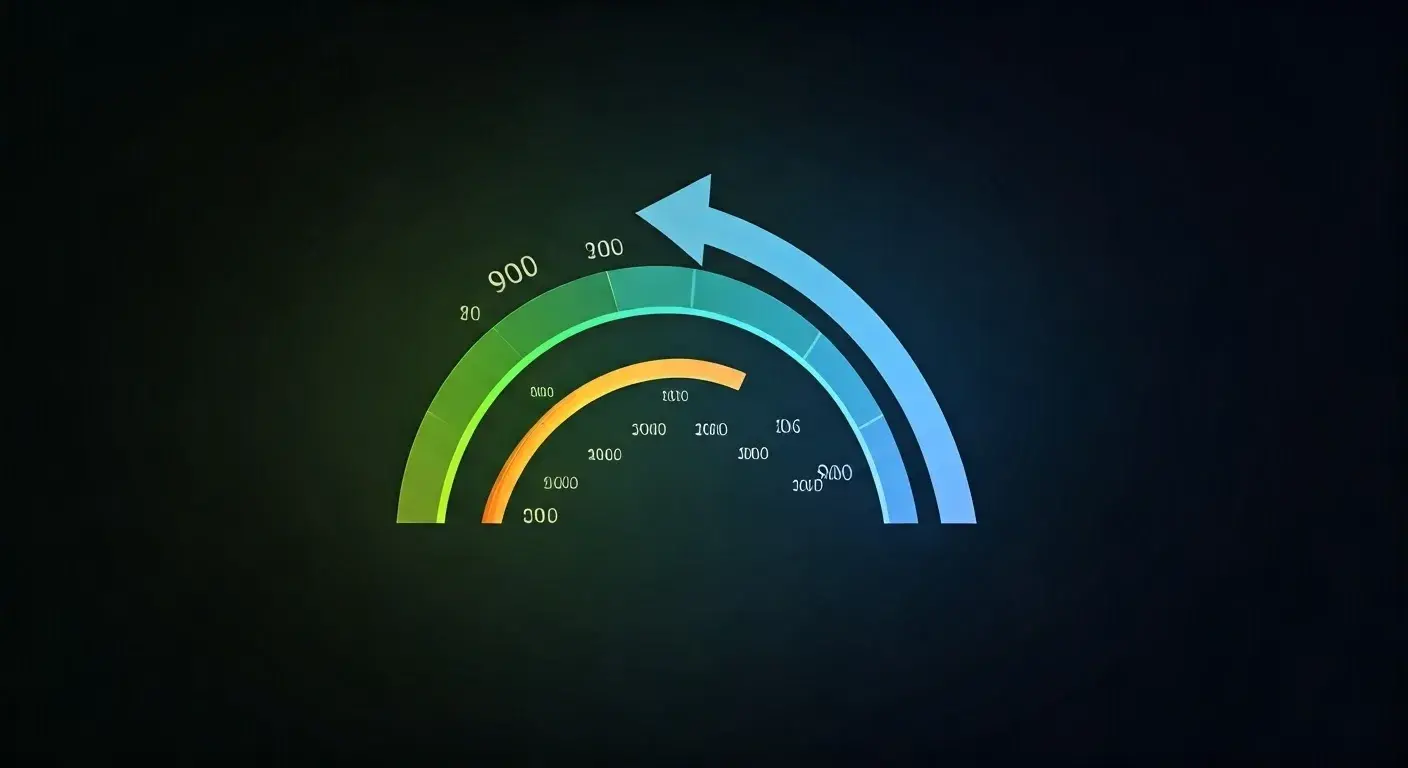-
Posted on: 31 Jul 2024
-
Navigating the world of credit can be confusing, especially when you encounter terms like "FICO score" and "credit score." While often used interchangeably, they aren't exactly the same thing. Understanding the nuances between these terms is crucial for managing your financial health and securing favorable loan terms.
What is a Credit Score?
A credit score is a three-digit number that represents your creditworthiness. It's a snapshot of how likely you are to repay borrowed money, based on your credit history. Lenders use credit scores to assess risk when you apply for a loan, credit card, or other forms of credit. A higher credit score generally indicates a lower risk, which can translate into better interest rates and loan terms.
Think of it as a report card for your financial behavior. It summarizes your past payment history, outstanding debts, and other relevant credit information into a single, easy-to-understand number.
What is a FICO Score?
FICO score is a specific type of credit score developed by the Fair Isaac Corporation (FICO). It's the most widely used credit score in the United States. When people generally talk about a "credit score," they're often referring to their FICO score.
FICO uses a proprietary algorithm to analyze your credit report and generate a score ranging from 300 to 850. This score is used by over 90% of top lenders in the US to make credit decisions.
The FICO Score Range:
- Exceptional: 800-850
- Very Good: 740-799
- Good: 670-739
- Fair: 580-669
- Poor: 300-579
Key Differences Between FICO Score and Other Credit Scores
While FICO is a type of credit score, it's important to understand that it's not the only one. Another prominent credit scoring model is VantageScore.
VantageScore:
VantageScore was created by the three major credit bureaus (Equifax, Experian, and TransUnion) as an alternative to FICO. It also aims to predict creditworthiness, but uses a different algorithm and scoring range than FICO.
Key Differences between FICO and VantageScore:
- Scoring Range: FICO scores range from 300 to 850, while VantageScore models typically range from 300 to 850 (though some older versions had different ranges). This makes comparing scores between the two more direct than it used to be.
- Data Requirements: Historically, VantageScore could generate a score with less credit history than FICO. While FICO usually requires at least 6 months of credit history, older VantageScore models could generate scores with as little as one month of credit history. The latest FICO models, however, are more flexible and can sometimes score consumers with limited credit history.
- Treatment of Paid Collections: VantageScore typically weighs paid collection accounts less heavily than FICO. This means that paying off a collection account might have a more positive impact on your VantageScore than on your FICO score.
- Scoring Factors: While both models consider similar factors, they may weigh them differently. This means that the same credit information can result in slightly different scores from FICO and VantageScore.
Factors That Influence Your Credit Score (FICO & VantageScore)
Understanding the factors that impact your credit score is essential for improving your creditworthiness. Both FICO and VantageScore consider the following factors, though they may weigh them differently:
1. Payment History (Most Important)
Your payment history is the single most important factor in determining your credit score. It reflects whether you've paid your bills on time in the past. Late payments, missed payments, and bankruptcies can significantly damage your score.
- Pay all bills on time, every time.
- Set up automatic payments to avoid missing deadlines.
- Contact creditors immediately if you anticipate difficulty making a payment.
2. Credit Utilization (Important)
Credit utilization refers to the amount of credit you're using compared to your total available credit. It's expressed as a percentage. For example, if you have a credit card with a $1,000 limit and you're carrying a balance of $300, your credit utilization is 30%.
Experts generally recommend keeping your credit utilization below 30%. Higher utilization rates can signal to lenders that you're overextended and increase your risk.
- Keep your credit card balances low.
- Pay down your balances each month.
- Consider increasing your credit limits (without increasing spending) to lower your utilization rate.
3. Length of Credit History (Important)
The length of your credit history also plays a role in your credit score. A longer credit history generally indicates a more stable and reliable borrowing pattern.
- Avoid closing old credit accounts, even if you don't use them regularly (unless there are fees associated with the account).
- Focus on building a long and positive credit history.
4. Credit Mix (Moderately Important)
Having a mix of different types of credit, such as credit cards, installment loans (e.g., car loans, mortgages), and revolving credit, can positively impact your score. It shows lenders that you can manage different types of credit responsibly.
- Consider diversifying your credit portfolio, but don't take out unnecessary loans just to improve your credit mix.
- Focus on managing existing credit accounts responsibly.
5. New Credit (Less Important)
Opening multiple new credit accounts in a short period can negatively impact your score. It can signal to lenders that you're taking on too much debt too quickly. Each application also results in a hard inquiry on your credit report, which can slightly lower your score.
- Avoid opening too many new credit accounts at once.
- Space out your credit applications.
Where to Find Your Credit Score
You can obtain your credit score from various sources:
- MyFICO.com: This is the official website for FICO scores. You can purchase your FICO score and credit report from here.
- Credit Karma: Credit Karma provides free credit scores and reports based on the VantageScore model.
- AnnualCreditReport.com: This website allows you to obtain a free copy of your credit report from each of the three major credit bureaus (Equifax, Experian, and TransUnion) once per year. While this doesn't provide your score, it allows you to check for errors and inaccuracies that could be affecting your creditworthiness.
- Your Credit Card Provider: Many credit card companies offer free credit scores to their customers as a perk.
- Lenders: When you apply for a loan or credit card, the lender will typically provide you with a copy of your credit score.
Why Credit Scores Matter
Your credit score plays a significant role in many aspects of your financial life:
- Loan Approvals: A good credit score increases your chances of being approved for loans, mortgages, and credit cards.
- Interest Rates: A higher credit score often translates into lower interest rates on loans and credit cards, saving you money over the long term.
- Insurance Rates: In some states, insurance companies use credit scores to determine insurance premiums.
- Rental Applications: Landlords may check your credit score when you apply to rent an apartment.
- Employment: Some employers may check your credit score as part of the hiring process.
How to Improve Your Credit Score
Improving your credit score takes time and effort, but it's a worthwhile investment in your financial future.
- Pay Your Bills on Time: This is the most important thing you can do to improve your credit score.
- Reduce Your Credit Utilization: Keep your credit card balances low and pay them down each month.
- Check Your Credit Report Regularly: Look for errors and inaccuracies and dispute them with the credit bureaus.
- Become an Authorized User: If you have a friend or family member with good credit, ask if you can become an authorized user on their credit card.
- Consider a Secured Credit Card: A secured credit card requires you to put down a cash deposit as collateral. It can be a good option for people with limited or no credit history.











